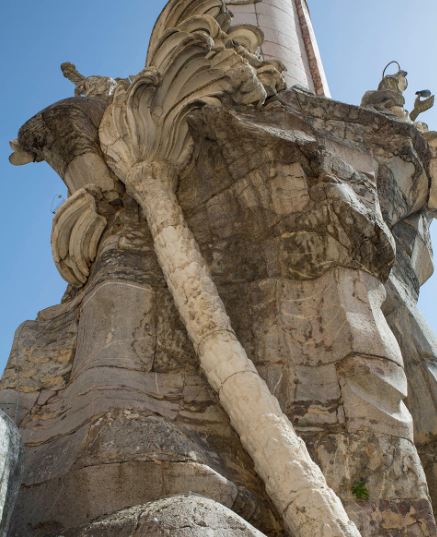










Chronology. Made in the 18th century
Author. Miguel de Verdiguer.
Description. The Triumph of San Rafael is a typology of typical Cordoba monument that dates back to the seventeenth century, the highest expression of popular devotion by the Custodian.
The devotion to the archangel goes back to the seventeenth century, to the years when the city suffers a strong epidemic of plague. According to tradition, San Rafael appeared in dreams to Father Andrés de las Roelas and to give him the message that he would save Córdoba from the epidemic. When the plague begins to subside, the apparitions of the archangel run through the city, being named from then on eternal Custos of Cordoba. A few years later, at the end of the same century, these monuments began to be erected, financed by individuals and local corporations.
The structure of these monuments is usually simple: the image of the archangel, carrying its attributes -the fish and the pumpkin- crowning a column or a pillar raised on a pedestal, although on some occasions, like the one built by Miguel de Verdiguer in the Puerta del Bridge architecture is much more elaborate. They used to be closed with bars and decorated with lanterns, which in many cases were the only point of light where they stood.
The origin of this typology is found in Baroque art itself: this movement, called the Counter-Reformation in its religious aspect, encouraged devotion to different Catholic claims through images, in contrast to the rejection of the same ones of the reform Lutheran It is there where triumph makes sense, as an exaltation of Cordovan devotion to the archangel.

0 Reviews